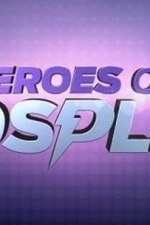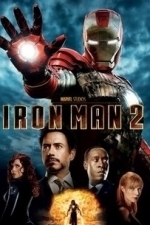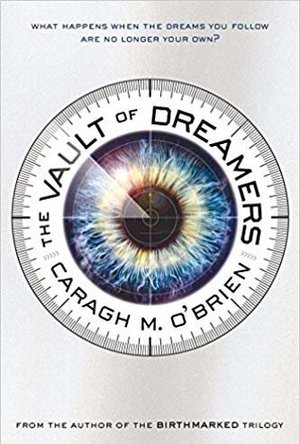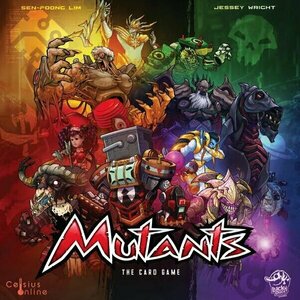Haley Mathiot (9 KP) rated Sing Me to Sleep in Books
Apr 27, 2018
But then through the course of several unexpected events, Beth ends up with the solo in her choir. She goes from ugly and in the back rows to re-made, re-styled, and re-“faced” after laser surgery. Her choir gets a chance to go to a competition in Switzerland.
And she meets Derek. Derek is on one of the other teams, the biggest, best, most famous choir. He’s the hottest guy she’s ever met. And he’s in love with her.
But there’s something wrong with Derek. He won’t tell her what it is, and she’s scared to ask because every time she brings it up, he runs away.
And the fact that Scott has admitted that he’s in love with her—and she’s pretty sure she loves him too—isn’t making anything less complicated…
Review:
I enjoyed Sing Me To Sleep. Please realize and remember that. It kept me reading, it moved quickly. But there were a few things that drove me crazy while I read this and took away from the overall enjoyment.
The first was the writing. There’s a difference between a writing style, and writing crappy. 75% of the “sentences” in this book were fragments. No, I did not count the sentences and take a literal percentage, but that’s what it felt like. There were a lot of two or three word phrases stacked next to each other. That does not count as a writing style, it’s poor grammar. It was so distracting that I found myself annoyed and wanting to put it down.
The second was the romance. In the beginning, the romance between Derek and Beth was just too rushed. There were no meaningful conversations, there wasn’t much plot, there wasn’t much talking. There was a lot of “I love you’s” and a lot of tension and a lot of kissing (hot kissing, but just kissing none the less). Beth was convinced she was in love with him—and he with her—but their relationship was so shallow, that I expected him to dump her any minute (or vice versa). It didn’t feel real.
Near the end, it became a little more real after Derek’s secret came out and Beth began to feel a little different about him. For the sake of keeping this review spoiler-free, I won’t say much more than that. However because their “love” was built on such shaky ground in the first place, most of the end didn’t feel very real either. Beth didn’t know what love really meant until the very end of the book. Poor girl.
The third… sadly, the characters. I didn’t feel much of a connection to them. Believe it or not, the one character I related to most was Scott. He wasn’t even in most of the book—most of it was Beth and Derek—but Scott was the most realistic character (and I’m totally in love with him) and the character that I could understand the best. But Beth and Derek both… I just didn’t connect.
I feel really bad that I’ve complained so much. I also feel really sad that I didn’t love this one. But as a reviewer I promise to be honest, and this is how I feel. Again, as I said at the top, I enjoyed the book, it kept me reading though it wasn’t a sit-on-the-edge-of-your-seat kind of page-turner. But it was a bit of a let-down after all the 5-star or A+ reviews I’ve read for it. Don’t listen to just one opinion. Check out some other reviews for this one before you decide to believe me.
Mothergamer (1604 KP) rated Heroes of Cosplay - Season 1 in TV
Apr 3, 2019
I know it's for TV and it's "scripted", but it would have been nice to see some positive things, such as how encouraging cosplayers can be and supportive of each other about costume choices, or how helpful they can be when asked about how to make a cosplay better or more cost efficient without missing out on making a great costume. Instead, it was essentially The Jersey Shore of cosplay and it was awful. To have the only good thing be Yaya Han with an amazing League Of Legends cosplay by the way, does not make for a good show. There's also the factor that Mark Cronin, an executive producer of the show basically dismissed male cosplayers in a TV Guide interview by stating that their costumes were simpler because it's just body armor, capes, and weaponry and the female cosplayers were more interesting, sexy, and cool. Seriously? Tell that to one of my friends who MAKES his own armor and weapons, actual chain mail and the like. Trust me, there's no simple about it. Both genders put a lot of work into their cosplay, there isn't one is better than the other. Just from that statement alone, I should have known this show was in trouble and not going to be done right at all.
Then there's this wonderful stunt that Syfy pulled:
https://www.facebook.com/photo.php?fbid=615451091819119&set=a.394389740591923.99759.387115251319372&type=1&theater
That's right. They used the photographers' photos WITHOUT permission and they knew exactly what they were doing, as they cropped them so the watermarks did not show on the page, and did not give them credit or get a copyright release from them. They did it to at least seven photographers that we know of. Of course the people who they blatantly STOLE from were angry and they had every right to be. Not only does this show an outrageous show of disrespect to the cosplay community as well as the photographers' whose work they ripped off, it's mind boggling that they thought they could get away with it without anyone noticing! The only one who actually took the time to try and make it right was Yaya Han who stated on her fan page that she had immediately informed Syfy's PR department about it and was doing everything in her power to make sure that the photographers did get credit for their work.
I like Yaya Han. She comes across as genuinely kind, loves cosplay as much as her fans, and unlike Syfy's craptastic PR department, cares about doing the right thing. This is why I really wanted to like this show. I really did. I was pleased to see she was doing this show about cosplay, but after watching this first episode and seeing that Syfy apologized on their page only AFTER they were caught and informed (But let's face it, they KNOW the rules about copyright infringement) that hey, it's bad to steal an artist's work, not even the fantastic Yaya Han can convince me to watch. It's really a shame, because they had an opportunity to do something great and showcase all the aspects of cosplay and what it means to those who enjoy and love it. Instead, they went the let's be gigantic a-holes route and behaved pretty damn shamefully.
So, no I will not be watching this again. One episode was enough.
Darren (1599 KP) rated Iron Man 2 (2010) in Movies
Oct 24, 2019
Performances – Robert Downey Jr is still great to watch, he keeps the charisma required for his role, while bringing an emotional factor which is needed for where his character goes in this film. Gwyneth Paltrow does have a bigger role here and brings us a much stronger performance with her character. Don Cheadle is an improvement on Terrence Howard, bringing Rhodey to life more. Scarlett Johansson has the perfect look for this character which is only first jumping into the franchise. Sam Rockwell as another inventor arms dealer who is filled with the swagger required. Mickey Rourke as the villain has good motives he does everything he can even if he character does grumble a lot.
Story – The story follows up the beginning of Iron Man dealing with the idea that the military would want control of the equipment and the rest of the world will be playing catch up, with their own versions of the Iron Man suit. This is a strong world building exercise to the Iron Man universe, we get to see how SHIELD are operating in the shadows watching over the potential threats. We have a villain that is competition and another one that is out for personal revenge. We up the stakes in this one, Tony does have to deal with his own problems by needing to improve the suit and we get to set up the position of who is one the good side with teases of the eventual Avengers team up.
Action/Sci-Fi – The action in this film relies on a couple of big scenes, we have the racing introduction, the mid-life crisis sequence and the showdown, each has their own way to make an impact. The sci-fi side of the film continues to show the technology advances that Tony is dealing with.
Settings – The film uses the settings more for the action with one of the most iconic action sequences in the franchise, we continue to see Tony’s lab which tends to get destroyed a lot too.
Special Effects – The special effects in the film make each fight, drone or Iron Man suit look realistic through the film which is what needed for the film.
Scene of the Movie – Monte Carlo entrance.
That Moment That Annoyed Me – There is a small pacing issue.
Final Thoughts – This is a fun sequel that continues to build the universe we know now, Tony still needs to learn about his place and how to handle the suit which is important and shows the past could come back to haunt you.
Overall: Fun sequel.
Sophia (Bookwyrming Thoughts) (530 KP) rated The Vault of Dreamers in Books
Jan 23, 2020
The Vault of Dreamers had a completely different concept that I had been dreaming of, but despite the fact I was thinking of something else entirely, the idea behind The Vault of Dreamers was perfect. Dreams = Hope. What better way than placing that in a prestigious school of art, competition, and to top it off – a reality show? Definitely a dream come true for some – as much as I want to try my hand in acting one day, a camera stalking my every move 24/7 is NOT my dream come true.
Rosie Sinclair is one of the students attending the school – called the Forge School, and the show is called the Forge Show. Not exactly a creative name in my opinion (Forge???). Though, as you read the book and as Rosie finds out what's really happening at night at the Forge School, the name makes a lot of sense. Especially when you take a peek at forge's etymology.
Rosie's sort of different from other characters I read – she's rebellious from the start. She doesn't find anything amiss among the school at first, so her breaking rules straight from the beginning is simple – she misses night. Most I come across are say... going with the flow. Everything's happy until something sinister happens or said character finds something sinister about something. Rosie, well, she's all "I'm a rebellious person, and I'll be breaking rules after laying low for awhile."
The voices Rosie has is really weird as well. O'Brien writes those as though Rosie is two people – she even replies with her thoughts to that voice! If that's not odd, I don't know what is. Actually, I can think of a lot of other things that can be more odd, but that's beside the point.
What I still don't get, however, is why Rosie went to the Forge School when a) she hates cameras and prefers being behind them instead and b) she knew full well when she applied that she would be watched 24/7. The Forge Show isn't one of those shows that go blah – it's widely popular. And with the Internet still existing in Rosie's world, why isn't there a YouTube of sorts? Is everyone that addicted to The Forge Show that there's nothing else to watch? Or is it just the thrill of watching 12 hours – even AGT isn't that long! – of students in grades 10-12 competing for fame? No wonder reality shows are flying up the charts – guys, what happened to the wondrous days of Code Lyoko? :p
As much as I enjoyed following Rosie around as she tries to find out what's going on at night at The Forge School, I was sort of disappointed in the ending. Well, the last chapter, which technically counts as the end. The run down? <spoiler>Rosie gets caught breaking the rules twice, finds out the actual truth of what's going on, dean and co tries to stop her, which results in her being whisked away from the world forever. Essentially, Rosie is dead, yet not dead. Until she's 18, but how much time passes between getting caught and the last chapter, I have no clue. The ending's all very open-ended – which CAN have it's perks – but I don't know what's going to happen with Rosie. However... it's rare the villain wins.</spoiler>
The Vault of Dreamers will most likely appeal to those interested in reading about a reality show where everything is not what it may seem behind cameras. I may look into O'Brien's other works.
------------------
Advanced review copy provided by Macmillan for review
Original Rating: 3.5 out of 5
Original Review posted at <a href="http://bookwyrming-thoughts.blogspot.com/2014/09/arc-review-the-vault-of-dreamers-by-caragh-m-obrien.html">Bookwyrming Thoughts</a>
<a href="http://bookwyrming-thoughts.blogspot.com/"><img src="http://3.bp.blogspot.com/-cG5gfBqJVzk/VA5BIojjZ9I/AAAAAAAAD1g/7srLUfpAGEU/s1600/banner.png"; /></a>

MotoGP Racing - Championship Quest
Games and Sports
App
MotoGP 2017 Season Edition. Finally a motorcycle racing game that keeps you on the track and focused...
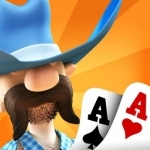
Governor of Poker 2 - Offline
Games and Entertainment
App
PLAY POKER, FREE SINGLE PLAYER HOLDEM POKER OFFLINE on your iOS device and beat every cowboy in...
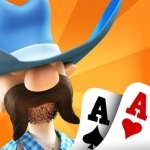
Governor of Poker 2 HD - Texas Holdem Poker without internet
Games and Entertainment
App
PLAY POKER, FREE SINGLE PLAYER HOLDEM POKER OFFLINE on your iOS device and beat every cowboy in...
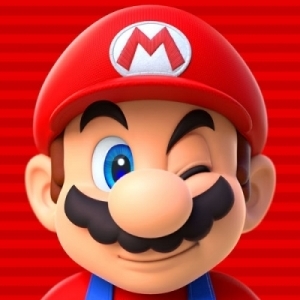
Super Mario Run
Games
App Watch
A new kind of Mario game that you can play with one hand. Super Mario Run has received some big...

Evolve Basketball
Sports and Social Networking
App
Evolve Basketball App is an all in one basketball training app. It is a complete tool that allows a...
Purple Phoenix Games (2266 KP) rated Mutants in Tabletop Games
Mar 11, 2022
Mutants is a crazy-themed deck building, hand management, fighting, card game for one to four players. Usually in this instance I would put together a Solo Chronicles review, but I wanted to first get the multiplayer rules down and then delve into solo. In any case, this game pits players against each other in a royal rumble where controlling mutants to fight one another most effectively and efficiently will earn the player riches galore. Come check out the world of Mutants.
To setup, well, there are many steps. The biggest and perhaps most confusing step is creating the decks of mutants that will be used by players throughout the game. I will recommend you follow the rulebook for drafting your team, or simply use one of the provided pre-constructed team suggestions. Otherwise, place the main board on the table, along with the power and scoring tokens for each player. Players choose their player board according to color chosen, take their starting deck, and divide their Advanced Mutant deck into three piles, with the top card flipped face-up. Players draw a hand of six Basic Mutant cards (one of each type initially) and the battle may begin!
Mutants is played over five rounds, tracked on the main board. Each round encompasses three phases: Crush the Competition, Move Active Mutant, and Take Action. As the game progresses, the power tokens for players will be moving up and down the Power Track. If, at the start of the current player’s turn, an opponent’s power token is located in one of the last three Power Track spaces (named the Dread Zone), and the current player’s token is on the Fury Space (furthest along the Track), then the current player will score immediate bonus points by Crushing the Competition.
The first turn will not utilize the Move Active Mutant phase, but on subsequent phases, this will need to be resolved. A player’s board consists of three main slots: Left Mutant, Active Mutant, and Right Mutant. Mutants may only enter the Active Mutant slot in the middle, so if a Mutant is currently placed in that slot, it will need to be moved either to the Left or Right slot, at the player’s discretion. Should all slots be filled, one of the Mutants will need to be moved off the board to make room for the new one. Once this happens, the Mutant’s Leave Ability (at the bottom of the Mutant’s card) will activate. This could give the player more Power, some Attacking abilities, or other unique abilities. Once a card leaves their slot and applies their Leave Ability, it is placed in the Discard space at the bottom of the player board.
Now that the Active Mutant slot is available, the current player may choose from one of the Take Action choices: Deploy Mutant, Breed, or Incubate. To Deploy Mutant, simply play a card from hand to the Active Mutant slot, activating the Deploy Ability once placed. These Deploy Abilities could range from cycling (draw a card from the deck and discard a card from the hand), gaining Power, or even reactionary abilities. Breeding Mutants requires the player to discard two cards from hand whose type icons match those of one of the face-up Advanced Mutant cards atop the player board. Discarding these cards allows the Advanced Mutant to enter play on the Active Mutant slot. Finally, the player may instead choose to Incubate an Advanced Mutant from one on offer by discarding one card (and it does NOT need to match icons) and placing the chosen Advanced Mutant on the Incubator slot on the left side of the board. These incubated Advanced Mutants will be placed atop the draw deck at the end of the round, so it will be drawn during the next round.
If at any time a player needs to draw a card from their draw deck and there are no cards remaining, they will first choose a card from their Discards to Freeze, by placing it in the appropriate Cryo Freezer on the right side of the player board. Frozen cards will be scored at game end, and can really boost a final score.
At the end of the round players will perform a few more tasks and setup for the next round. First, the Power Tokens are scored according to which is in first place along the Track and so on, using the red and black VP numbers printed on the main board. The round marker is advanced one level, and each Mutant in Incubation is moved to the players’ draw decks. Players then draw a new hand of six cards, and Power Tokens are reset according to the previous round’s placement, in reverse order. The player whose Power Token is now furthest behind will be the starting player for the next round.
Play continues in this fashion of moving Mutants around, taking actions, and jockeying for supremacy along the Power Track until the end of the fifth round. At that time, the final VPs are awarded for the Power Track placement, and all cards in the Cryo Freezer are tallied. The player with the most VP at the end of the game is the winner of Mutants!
Components. Okay, I have some thoughts here, and more than just, “oh hey, they are nice.” The game comes with a bevvy of cards, some wooden tokens, and a couple “boards.” I used quotations because only the main board is an actual board. The player boards are slick cardstock and, while functional, feel a little cheap. The cards themselves are all super great and the artwork is appropriate and quite excellent. I have a couple issues with some other components, however. The Power and Score Tokens are the only wooden components in the box and I just do not understand them. They look like Sauron/Spartan helmets, or someone who is crying because they just shoved a fork into the power outlet. Now, there are four of each type in different colors, and though the colors aren’t the primary colors we have grown to accept for our player colors, they have swapped out the green for purple, and I think the game is colorful enough to include more exciting colors. So I’m not a fan of the Power and Score Tokens. Similarly, I don’t really understand the insert that comes with the game. I see that it is setup to hold TONS of cards, and maybe there were/are plans for many many expansions, but the base game can be housed in two of the 14 total card slots provided. Also, I have no idea what is going on in the middle of the insert, but I also don’t own any of the expansions yet, so hopefully those molded spots are actually meant to hold something. Everything else, though, is great!
For me, art and components are very high on my list of items that affect how much I enjoy a game. Now, I can live with the wonky Power and Score Tokens, and I suppose I don’t mind carrying around a giant box of cards, when the game could ALMOST fit inside a box the size of Bohnanza or Point Salad or the like. That said, I have definitely enjoyed my plays of Mutants. The rulebook is a little daunting at first, mostly because the theme is unique and the game style is similarly different to me. Once the game gets into the thick of it, though, strategy and tactics take over so strongly. Each card is carefully considered for its usability as either a card to be played or discarded for varying effects. I love that about this game.
This is certainly more than a “deck builder,” even though deck building and hand management are at the forefront of the mechanics here. You aren’t necessarily building your deck and cycling through it quickly enough for me to consider this a true deck builder alone, but using each card for different purposes certainly increases the replayability with Mutants. When is the best time to freeze a card versus keeping it in the deck for its abilities? Do I move off the Left Mutant or keep it around for another turn? Why did I pick these Advanced Mutants during the draft, when I have crappy supporting cards? Every play of Mutants has been a wonderful challenge of maximizing my deck and choosing just the right opponents to attack with my monstrous creations. Purple Phoenix Games gives this one a horrifically delightful 5 / 6. I hate having to bling out my games, but I think I will probably try to find replacements for the Power and Score Tokens (though maybe a little spray paint will help?), and look into grabbing one or all of the expansions so that I may be able to fill up that confusing insert. I look forward to my next games of this, and to getting the word out on this little gem I finally tried.

